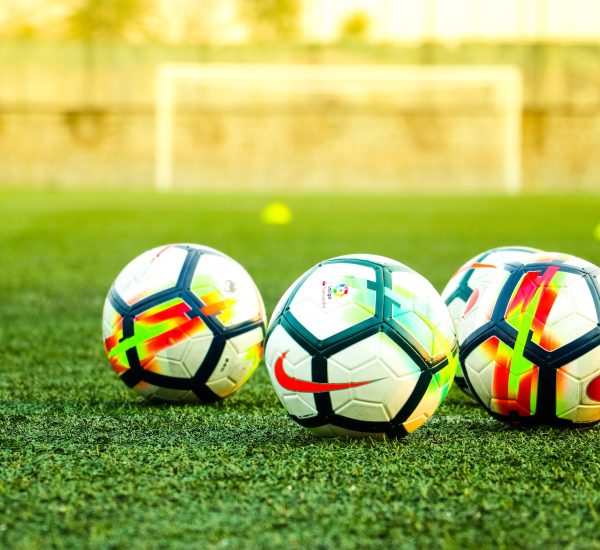If you’re looking for some great soccer passing drills, try pushing the ball with your ankle locked and your hip open.
This is a great soccer drill to work on completing a pass in a single touch and can help you get the ball into the right hands of teammates. Repeat this pattern twenty times. You can also try alternating between the two foot positions for variety.
Two-touch and Juggling soccer passing drills
For players who have trouble passing the ball with one touch, you can do a two-touch or juggling soccer passing drill. More advanced players will need to juggle the ball at different distances. When juggling the ball, make sure that the player is using the inside of their feet and focuses on the center of the ball.
Begin this drill by sending the ball with your right foot. Once it hits the wall, use your left foot to settle it. When the ball returns, use your right foot to direct it back to the wall. Repeat this motion for six to eight times. If you find it difficult, you can try doing the same with your right foot.
In Part 2 of the video, focus on getting two touches on the ball between bounces. You should also work on keeping the ball low, in front of you, and under control. Try to do as many reps as you can. This exercise can take some time, but it will pay off when you can master it.
One of the easiest soccer juggling drills involves flicking the ball off the ground. To do this, keep the ball on your dominant foot, roll it backward, and flick it with your toes. You can also lift your leg or foot up to flick the ball.
Juggling drills are an excellent way to improve touch and ball control. These drills also help players boost their confidence.
Push passes
Push passes are a type of pass that players should learn. These passes are short and medium-range, and allow players to move the ball with ease, accuracy, and speed. When performing push passes in soccer passing drills, players should place one foot in front of the ball and use the opposite foot to play the ball back.
The push pass is a good soccer passing drill because it requires balance and good technique. It’s important to use the appropriate surface when striking the ball and look at the target during contact. It’s also essential to use the right technique when making the pass by pulling your toe up and locking your ankle.
The push pass is one of the most important types of passes in soccer. This type of pass is commonly used to pass the ball in any direction, and it’s an essential skill to develop both feet. When performing push passes, players should rely heavily on their non-dominant foot and use a competitive environment to maximize their results.
When completing push passes, players should aim to strike the ball with the center of the ball. This way, the ball will be firm and not bounce. The bottom third of the ball should also be hit with force. This will allow the ball to roll smoothly. During push passes, players should also work on momentum.
Push passes improve a player’s accuracy. To execute this drill, players should start at the right side of the left marker. They should aim to hit the ball towards the wall and back into the gate created by two markers.
Ten meters – wall target
Soccer passing drills are one of the best ways to improve accuracy. This drill requires one player to pass the ball one touch and then hit the wall with a second touch. A different player will volley the ball back for each player, so players can take turns. In the same way, two-touch passes and three-touch passes are good techniques to practice.
This drill will improve passing accuracy and speed. The player starts on the right side of the right marker and makes a pass towards the wall, and then the ball should return inside the goal area. You can also use a wall as a target if you’re working on your distance control.
This drill is a good way to improve eye-foot coordination and muscle memory. You can also do this drill with a partner. Different skills can be practiced, including one-touch passes, two-touch passes, and first touches in the air. It can also help players improve their ball control.
When you use a wall as a target, it’s important to keep the ball in your feet as much as possible. You can make this drill more challenging by using wall targets and other obstacles. This drill is also great for breaking defensive lines at speed and improving your shooting skills.
When you do this drill, divide your team into four lines. One team will be the offensive team and the other will be the defensive. The players will alternate foot types and run between the two lines. While passing, the players should keep their heads up as they dribble the ball. This will keep teammates informed of the situation.
Push passes with hip open and ankle locked
When it comes to making a successful push pass, keeping your hips open and ankle locked is a key to success. Keeping the hips open helps you make good contact with the ball, and it helps you get the flattest part of your foot in the middle of the ball.
Another key to perfecting your push pass technique is to stay focused on the ball. If you’re looking down at the ball too much, you’re likely to get poor technique. A good passer will spend only a small fraction of the time looking down at the ball.
The post pass is the most common type of pass in soccer. This type of pass is a versatile pass that can be used in many directions. It requires practice to develop both feet. You can improve this skill by doing push passes with both feet. To make the best push passes, try practicing in a competitive environment.
When it comes to passing, the goal is to move the ball quickly among teammates. The idea is to keep the ball away from your opponent and place it in a position where the shooter can score. The inside of the foot pass is often the first pass introduced to new players.
It’s the easiest pass to learn and is effective over short distances. It also does not require a great deal of leg strength. But when it comes to accuracy and control, push passes are the best option.
When practicing push passes with hip open and ankle locked, it’s vital to focus on your foot movement. You want to avoid bad mechanics and bad habits. Your toe should be pointed up as you connect with the ball. In addition, you want to keep the ball in front of your plant foot.
Rotation of players after a loss of possession
Rotation of players after a loss of ball possession is a tactical move used by teams in order to put pressure on the opposing team. During a game, players will move from their initial positions and make a half rotation.
This is to ensure the opposing team is constantly under pressure and can be used to their advantage. During this process, the first player will lose the ball or run out of boost. Then, the second player will try to take over his position.
In the group stage of a competitive league, the probability of rotation is comparatively low. In fact, the probability of rotation between two teams is about 30%. However, it is still significant and can affect the strategy of coaches. They may be able to limit rotation of players to their best or most exploited players.



